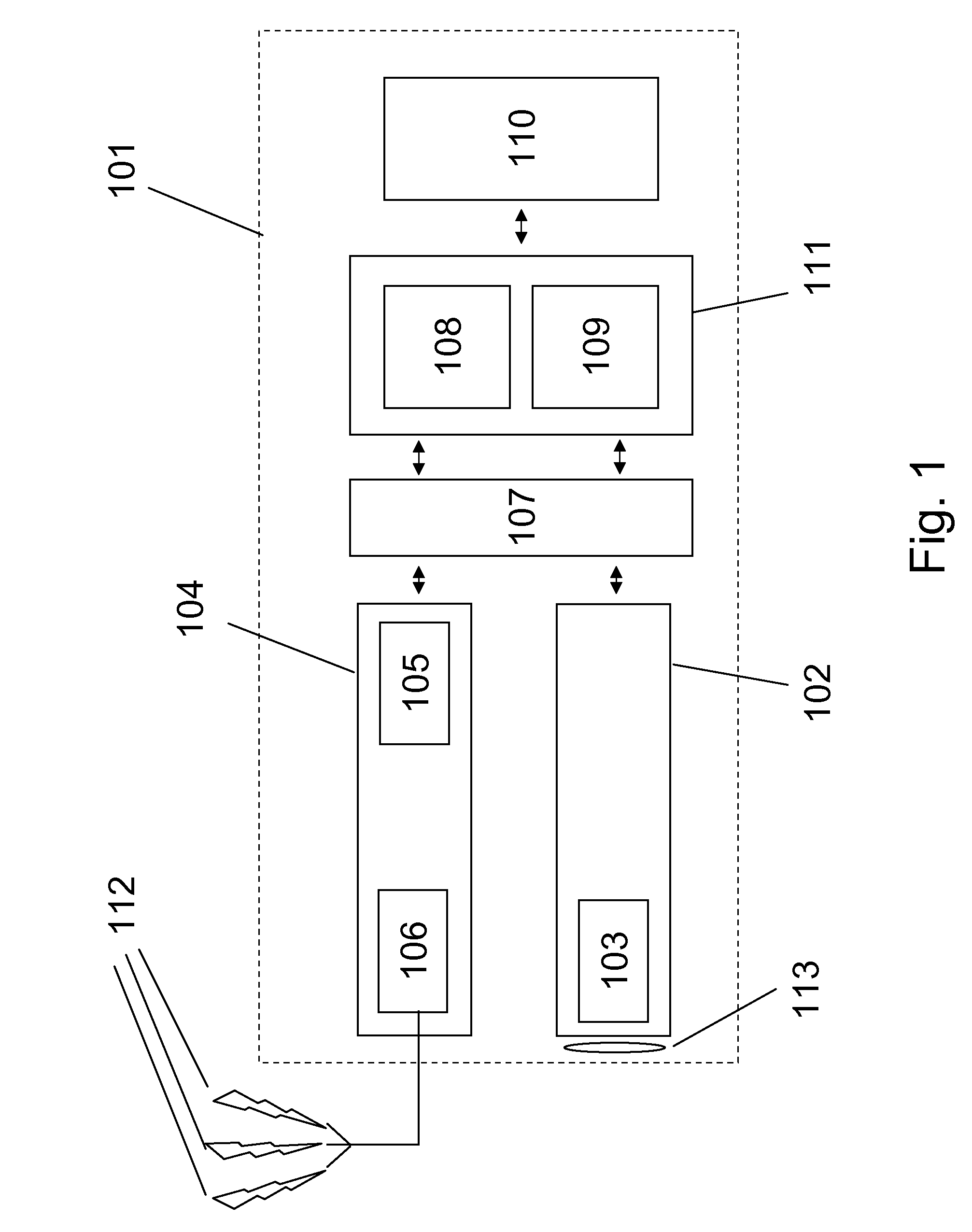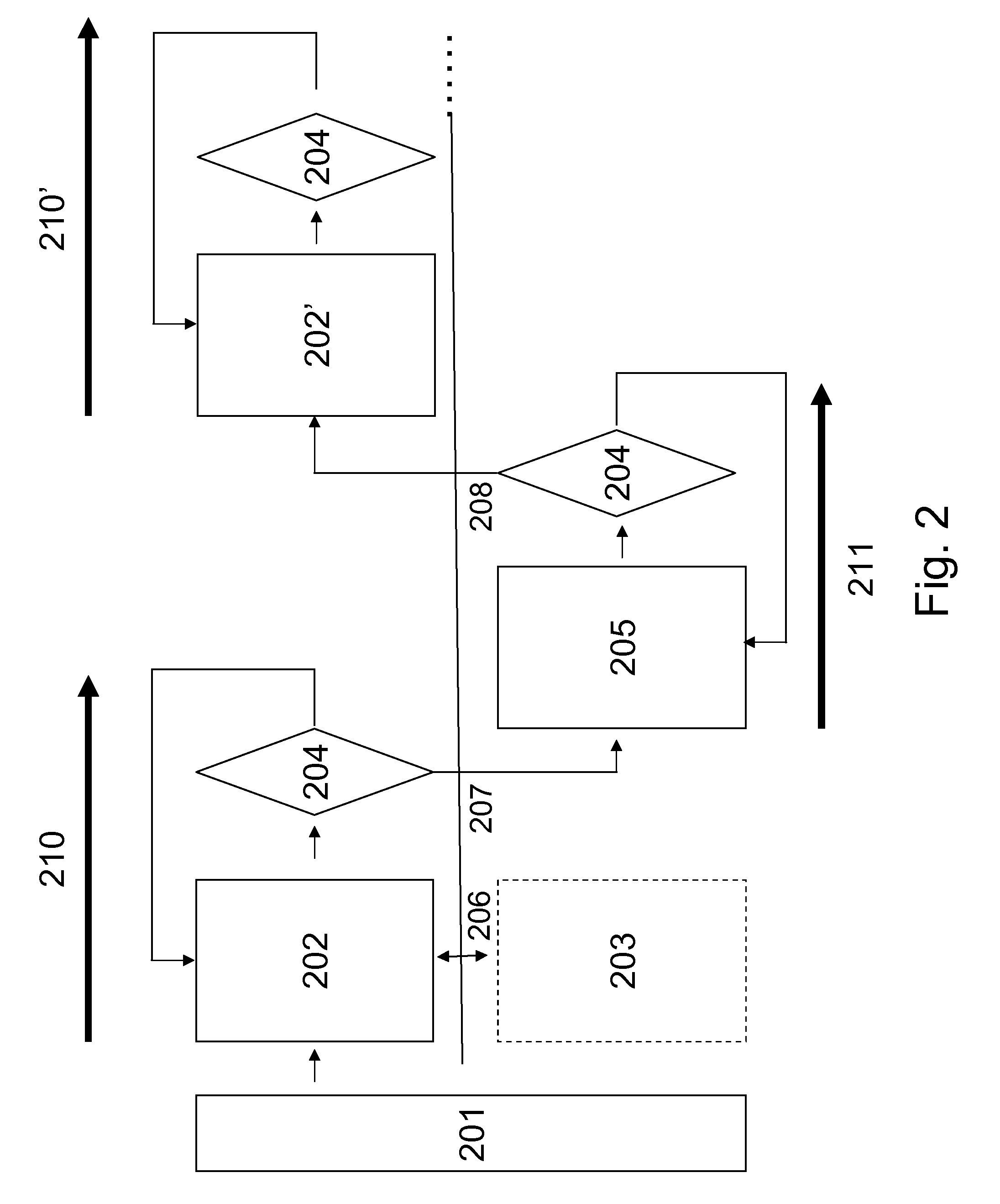GNSS method and receiver with camera aid
a receiver and camera technology, applied in the direction of navigation instruments, traffic control systems, instruments, etc., can solve the problems of 130 dbmw for gps signals on earth surface, requiring a high processing power, and nominally becoming too weak, so as to achieve easy integration and use
- Summary
- Abstract
- Description
- Claims
- Application Information
AI Technical Summary
Benefits of technology
Problems solved by technology
Method used
Image
Examples
Embodiment Construction
[0028]The present invention refers to a navigation system and a related navigation method running on a portable device or host system 101 as described on FIG. 1. The host system 101 contains a GNSS receiver 104, preferably a GPS receiver 104 integrating an RF front-end 106 receiving navigation signals 112 sent by satellites, and a GNSS processor 105. The GNSS receiver 104 can be a module in a cellular phone, a PDA (Portable Digital Assistant) and so forth; however it can also consist in a pluggable module, which may be connected to the hosting device 101 by means of an appropriate bus, for example a GPS PC-card.
[0029]According to the preferred embodiment illustrated on FIG. 1, the “GPS receiver”104 is coupled to a camera module 102 of the host system through a communication interface 107. The camera module 102 is depicted with its lens 113; it also contains a sensor 103, for example a CCD image sensor or a CMOS image sensor.
[0030]The interface 107 is not only meant for the connectio...
PUM
 Login to View More
Login to View More Abstract
Description
Claims
Application Information
 Login to View More
Login to View More - R&D
- Intellectual Property
- Life Sciences
- Materials
- Tech Scout
- Unparalleled Data Quality
- Higher Quality Content
- 60% Fewer Hallucinations
Browse by: Latest US Patents, China's latest patents, Technical Efficacy Thesaurus, Application Domain, Technology Topic, Popular Technical Reports.
© 2025 PatSnap. All rights reserved.Legal|Privacy policy|Modern Slavery Act Transparency Statement|Sitemap|About US| Contact US: help@patsnap.com



